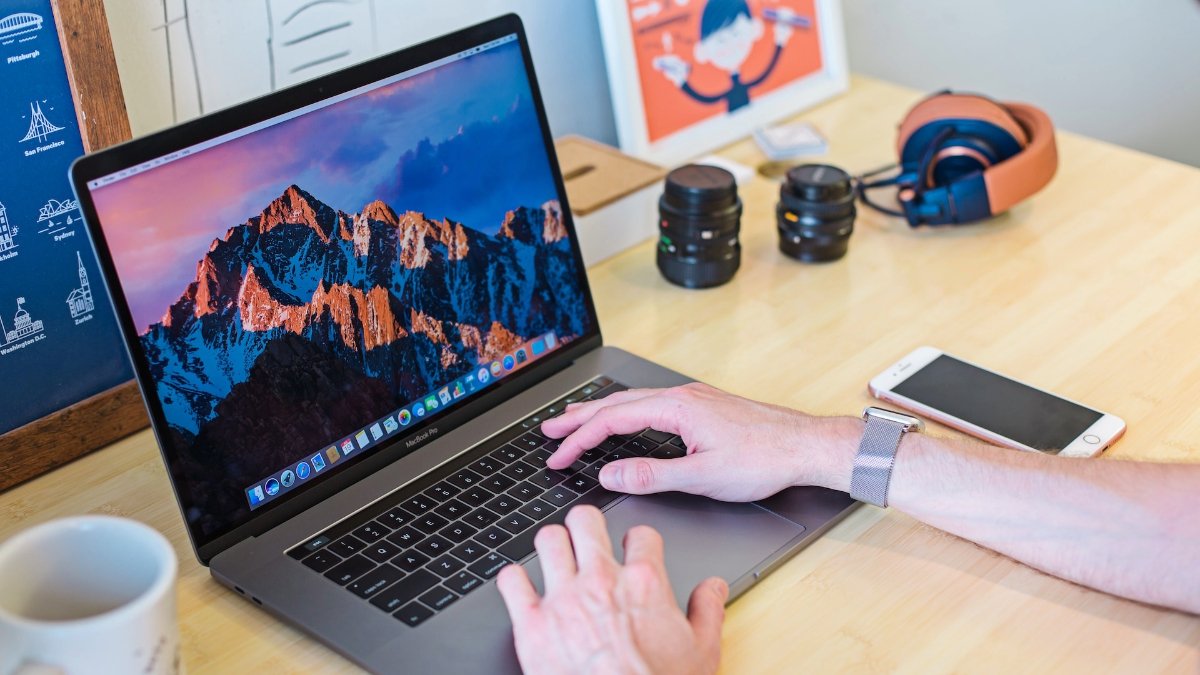

If you’re looking to enjoy your Mac’s content on a larger TV screen, you might have come across Roku as a decent solution. Using Roku, you can view your videos, photos, presentations, and more on your Mac on a big screen. Also, by mirroring your Mac to Roku, you can also watch content that’s unavailable on Roku’s native channels.
But how can you mirror your Mac to a Roku? That we’ll find out in this guide. We’ll explore different methods for Roku devices that support AirPlay and for those that don’t. Let’s get started.
If your Roku supports AirPlay, you can use AirPlay to mirror your Mac to Roku. AirPlay is a handy feature on modern Apple devices that lets you share a Mac screen with other devices, including Roku. You can use this feature to mirror whatever you are watching on your Mac to your Roku device.
But before you can do that, make sure of the following:
To check if your Roku device supports HomeKit and AirPlay, follow these steps:
Once done, follow these steps to mirror your Mac screen to Roku:
This will mirror your entire Mac screen on Roku.
But if you want to mirror a single file to your Roku, do this:
In case your Roku device doesn’t support AirPlay, there are two ways you can mirror your Mac to your Roku device. First one is to use a third-party app to mirror your Mac screen to Roku. The second one is to use an HDMI cable to display your Mac on the display connected to your Roku device.
Here are some popular third-party apps that offer seamless Mac mirroring on Roku.
Pricing: Free version with 20 minutes of continuous streaming and mirroring. The Pro version offers unlimited streaming at $9.99 (auto-renewable subscription).
JustStream is a great app for Mac that easily mirrors your screen on Roku. It supports a wide range of video formats and can even change them as needed while you use it.
Moreover, you can use external or embedded subtitles, customize them when streaming, and create playlists for uninterrupted entertainment. With native M1 support, it offers smooth video conversion and seamless mirroring on devices like Roku.
Let’s see how you can mirror your Mac to Roku using JustStream:
Apart from JustStream, you can also use Airbeam TV or Omni Player to mirror your Mac to Roku.
Pricing: Free to download and use. Advanced features are available for a lifetime for $14.99.
AirBeamTV is a user-friendly solution to mirror your Mac screen to Roku. Whether you’re streaming movies, giving presentations, or sharing photos, AirBeamTV offers high-definition visuals and sound.
It offers a free trial and a one-time purchase with lifetime access to seamless mirroring. After downloading the app, simply launch the AirBeamTV app on your Mac, select “Start Mirroring,” and your screen will instantly display on your TV.
Pricing: Free to download and use. The VIP version is available for a lifetime for $9.99.
Omni Player is another wonderful app for mirroring your Mac screen to Roku. It offers a range of versatile features, including support for various media types. You can effortlessly play nearly any format of local and remote server videos and audio via SAMBA/FTP protocols.
Moreover, it also supports online videos and audio accessible through HTTP/HTTPS protocols. Another cool feature of Omni Player is that you can play YouTube and Vimeo videos directly using their webpage URLs, all while bypassing online ads.
A simple and reliable way to mirror your Mac to Roku is by using an HDMI cable. All you need to do is to connect your Mac and Roku via an HDMI cable. Note that if your Mac has Mini DisplayPort, you’ll need an extra adapter to ensure the video and sound work on the TV.
Why can I not find the AirPlay option on my Roku?
If you can’t find the AirPlay option on your Roku, it might be because your Roku lacks AirPlay support. Other than that, it can also be because the feature has been disabled. You can enable it by going to Settings in your Roku device, selecting “Apple AirPlay and HomeKit” and turning AirPlay to “On.”
Is AirPlay the only way to mirror a Mac to Roku?
AirPlay is one effective way to mirror your Mac to Roku, provided your Roku device supports AirPlay. You can also use a third-party mirroring app like JustStream to mirror your Mac to your Roku.
You can mirror Mac to Roku in different ways: by using a cable, AirPlay, or through third-party Apps. However, sometimes, mirroring your Mac to Roku doesn’t work as expected. One common reason is a weak Wi-Fi connection. It can make the mirroring slow or not work at all. That said, some apps and websites will not let you mirror their content at all.
Apart from that, if your settings are not correct or if both devices are not on the same network, mirroring might fail. So, make sure you have a strong internet connection, compatible apps, and both devices on the same network for smooth mirroring.
Which method worked for you? Let me know in the comments below!
This post was last modified on November 18, 2023 1:47 am